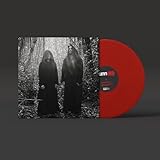Herbie Harper Vinyl Records Lps For Sale
Check out these new and used Herbie Harper vinyl records LPs for sale. We recommend starting your Herbie Harper vinyl collection with the essential albums Herbie Harper Sextet!, Tampa and Bud Shank. Our inventory is always changing, so check back often, or browse our list of vinyl records for sale from jazz musicians.
Auto Amazon Links: No products found. No products found.

Herbie Harper: West Coast Cool with a Warm Trombone Tone
Early Life and Musical Beginnings
Herbie Harper, born in Salina, Kansas, in 1920, emerged as one of the leading trombonists of the West Coast jazz movement. Known for his warm tone, lyrical phrasing, and polished technique, Harper played a crucial role in shaping the sound of cool jazz during the 1950s. While he never sought the spotlight in the way that some of his peers did, he became a vital part of the jazz infrastructure—both as a sideman and as a leader.
Growing up in the Midwest, Harper took up the trombone in his youth and quickly developed an ear for melody and harmony. By the time he reached his twenties, he had already begun performing professionally. After serving in the Army during World War II, he moved to California, where he became immersed in the burgeoning jazz scene that was forming around Los Angeles.
Establishing a Career in West Coast Jazz
In the postwar era, Harper became a fixture in the West Coast jazz community. The scene in L.A. at the time emphasized a more relaxed, cerebral approach to jazz, often referred to as “cool jazz.” Unlike the fiery, aggressive sound of bebop, West Coast jazz favored clarity, structure, and subtle interplay. Harper fit perfectly into this environment, bringing a smooth, mellow sound to an instrument that was often underrepresented in small-group jazz settings.
He began recording with top-tier musicians such as Stan Kenton, Benny Goodman, and Charlie Barnet. Harper’s ability to blend seamlessly into both big band and small group arrangements made him a valuable collaborator. His tone was never brash or overly assertive—it was smooth, refined, and expressive, capable of fitting into any ensemble while still retaining his personal voice.
Notable Albums and Collaborations
While Herbie Harper spent much of his career as a sideman, he also led a number of excellent sessions that showcased his skills as a composer and bandleader.
- Herbie Harper Quintet (1954) – One of his earliest albums as a leader, this record captures Harper in a tight quintet setting with vibraphonist Red Norvo. It features sophisticated arrangements and Harper’s fluid solos on tunes like “Harpers Bop” and “Summertime.” The album is a perfect example of the cool jazz aesthetic—elegant, restrained, and melodic.
- Herbie Harper Sextet (1955) – This album expands the group format and shows off Harper’s skill in arranging for multiple horns. The interplay between trombone, tenor saxophone, and trumpet creates a lush, layered sound that adds richness without overwhelming the listener. Tracks like “Five Brothers” and “The Night We Called It a Day” highlight his lyrical approach.
- Herbie Harper Featuring Bob Gordon (1954) – This collaboration with baritone saxophonist Bob Gordon is a standout in both musicians’ catalogs. The contrast between Harper’s soft trombone and Gordon’s deep, woody baritone creates a gorgeous sonic balance. It’s a cool jazz classic that’s often overlooked.
- Jazz in Hollywood Series – Harper appeared on several of these compilation albums, often alongside other West Coast jazz stalwarts. His contributions helped define the sound of L.A. jazz during the 1950s and contributed to the era’s sleek, cinematic vibe.
- Kenton Presents: Herbie Harper (1954) – Released on Stan Kenton’s label, this album was a strong showcase of Harper’s skills. The arrangements are tight, and Harper’s solos demonstrate his ability to balance technical fluency with emotional depth.
Herbie Harper Quintet Rare Orig. Tampa EP-123 1955 West Coast Jazz Rare EP
 | $29.99 Buy It on eBay for only: $29.99 Buy It Now on eBay |
Herbie Harper Sextet – Herbie Harper Sextet! Original 1957 Mono Press Cool Jazz
 | $29.99 Buy It on eBay for only: $29.99 Buy It Now on eBay |
HERBIE HARPER: featuring bob gordon NOCTURE 10" LP 33 RPM
 | $200.00 Buy It on eBay for only: $200.00 Buy It Now on eBay |
Vintage Vinyl Record HERBIE HARPER Sextet 1957 Jazz
 | $29.99 Buy It on eBay for only: $29.99 Buy It Now on eBay |
HERBIE HARPER 10" LP BETHLEHEM RECORDS BCP 1025 DG MONO JAZZ Charlie Mariano
 | $38.63 Buy It on eBay for only: $38.63 Buy It Now on eBay |
Herbie Harper Quintet Herbie Harper Quintet Nocturne TOJJ-6037 Japan LP OBI
 | $33.00 Buy It on eBay for only: $33.00 Buy It Now on eBay |
Herbie Harper - Herbie Harper Sextet [New Vinyl LP]
 | $26.16 Buy It on eBay for only: $26.16 Buy It Now on eBay |
HERBIE HARPER Feat BUD SHANK & BOB GORDON 1956 LIBERTY Mono JAZZ EX/EX+ Tested
 | $55.00 Buy It on eBay for only: $55.00 Buy It Now on eBay |
HERBIE HARPER QUINTET, Herbie Harper Quintet [VSOP] USA New Sealed Old Stock LP
 | $90.99 Buy It on eBay for only: $90.99 Buy It Now on eBay |
Herbie Harper/Herbie Harper, Japan Issue, with Obi Vinyl VG+
 | $85.70 Buy It on eBay for only: $85.70 Buy It Now on eBay |
Influence and Legacy
Though not a household name, Herbie Harper’s influence can be felt across generations of trombonists and West Coast musicians. He helped redefine the role of the trombone in small jazz combos, proving that the instrument could be just as lyrical and agile as a trumpet or saxophone. His playing was a model of taste and restraint, offering a counterpoint to the more explosive stylings of bebop-era trombonists like J.J. Johnson or Curtis Fuller.
One of Harper’s key contributions was his ability to blur the line between ensemble and solo playing. Even in his solos, he seemed to be in conversation with the rest of the band, prioritizing melodic development over flashy runs. This approach had a significant impact on trombonists looking to create a more vocal, narrative-driven sound.
Harper also influenced many younger musicians who came through the West Coast jazz scene in the 1960s and ’70s. His subtle, melodic approach to phrasing and his smooth tone became hallmarks for trombonists looking to work in studio sessions, film scoring, or modern jazz arrangements. Players like Carl Fontana, Bill Watrous, and even contemporary jazz artists have cited the cool elegance of Harper’s playing as an inspiration.
A Career Beyond the Spotlight
Harper spent much of his life in Los Angeles, where he worked not only in jazz clubs and recording studios but also in television and film. He contributed to numerous soundtracks and studio projects throughout the 1960s and 1970s, becoming part of the broader tapestry of West Coast commercial music. His adaptability and professionalism made him a go-to trombonist in many settings beyond traditional jazz.
Despite a relatively low public profile, Harper maintained a steady career well into the later decades of his life. He continued to perform, teach, and occasionally record, always staying true to the smooth, expressive voice that defined his playing. He passed away in 2012, but his contributions remain preserved in a body of work that reflects the golden age of West Coast jazz.
Conclusion
Herbie Harper may not be as widely recognized as some of his peers, but his influence on jazz trombone and West Coast cool jazz is undeniable. With a refined sound, a deep sense of swing, and a gift for melodic invention, Harper carved out a unique space in the jazz world. His recordings remain essential listening for fans of mid-century jazz, and his legacy continues to shape the sound of modern trombone playing. Quietly brilliant, Herbie Harper was the kind of musician who elevated every group he played with—an artist of subtlety, depth, and timeless cool.

![The Life of a Showgirl[Sweat & Vanilla Perfume Orange Glitter Vinyl] #1](https://m.media-amazon.com/images/I/51SJhJbv35L._SL100_.jpg)
![The Life of a Showgirl[Sweat & Vanilla Perfume Orange Glitter Vinyl] #2](https://m.media-amazon.com/images/I/5198D2rwyNL._SL100_.jpg)


![Merry Christmas II You [15th Anniversary Shiny Starlight LP] [Amazon Exclusive] #1](https://m.media-amazon.com/images/I/51MOyCwkOzL._SL100_.jpg)

![Currents [2 LP] #1](https://m.media-amazon.com/images/I/61zjlISscDL._SL100_.jpg)
![Currents [2 LP] #2](https://m.media-amazon.com/images/I/51ETyCkBSyL._SL100_.jpg)













![[Exquisite Appearance] Built from wood and metal materials with a unique sense of layering; The streamlined corner design is truly atmospheric and stylish(Note: long hold the start button to turn the power on, and press again to start) [All in 1] Thi...](https://m.media-amazon.com/images/I/41vovGjFkeL._SL160_.jpg)





































